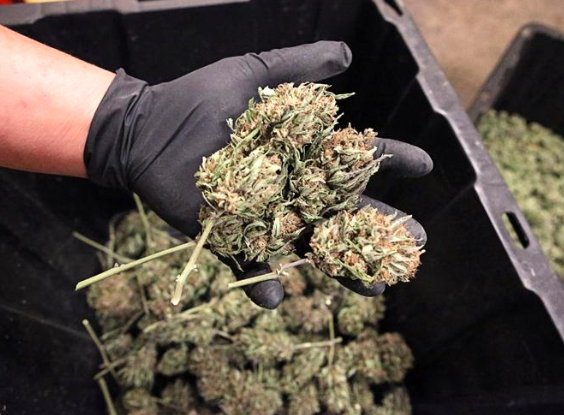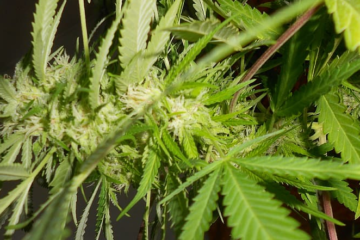The cannabis industry in Oregon has been struggling with a persistent oversupply of weed, falling prices, and declining sales for the past few years. According to the latest data from the Oregon Liquor and Cannabis Commission (OLCC), 2023 was another disappointing year for the state’s legal pot market, with sales dropping by 4.1% from 2022. This article will explore some of the factors behind this trend and the outlook for the future of Oregon cannabis.
Oversupply and Price Competition
One of the main reasons for the decline in sales is the oversupply of cannabis in Oregon, which has been a chronic issue since the state legalized recreational use in 2015. Oregon has one of the most liberal licensing systems in the country, allowing anyone who meets the basic requirements to grow, process, or sell cannabis. As a result, the state has more than 2,000 licensed producers, many of whom are small-scale outdoor growers who harvest their crops in October. This creates a seasonal glut of weed that floods the market and drives down prices.
According to the OLCC, the average wholesale price of cannabis in Oregon was $1,050 per pound in November 2023, down from $1,500 in November 2022 and $2,000 in November 2021. The average retail price of a gram of flower was $4.50 in November 2023, down from $5.50 in November 2022 and $6.50 in November 2021. These low prices make it hard for many businesses to cover their costs and pay their taxes, let alone make a profit.
Some producers have tried to cope with the oversupply by exporting their surplus weed to other states, either legally or illegally. However, this option is becoming increasingly difficult as more states legalize cannabis and create their own markets. Oregon is also facing competition from neighboring states like California and Washington, which have larger populations and more established cannabis industries.
Regulatory Changes and Enforcement Issues
Another factor that has affected the sales of cannabis in Oregon is the regulatory changes and enforcement issues that have occurred in the past year. In 2023, the OLCC implemented several new rules and regulations aimed at improving the compliance and safety of the cannabis industry. These include:

- Increasing the frequency and scope of inspections and audits of licensed premises and products
- Requiring all cannabis products to be tested for pesticides, potency, and contaminants by accredited labs
- Imposing stricter limits on the amount of cannabis that can be purchased by medical patients and recreational consumers
- Enhancing the tracking and reporting system for cannabis transactions and inventory
- Cracking down on illegal and unlicensed cannabis operations and diverting resources from the legal market
While these measures are intended to protect the public health and safety and ensure the integrity of the legal market, they also pose significant challenges and costs for the cannabis businesses that have to comply with them. Some businesses have reported delays, errors, and inconsistencies in the testing and tracking processes, which affect their ability to sell their products and generate revenue. Others have faced fines, suspensions, or revocations of their licenses for violating the rules or failing to meet the standards.
Consumer Preferences and Market Trends
A third factor that has influenced the sales of cannabis in Oregon is the changing consumer preferences and market trends. As the cannabis industry matures and evolves, so do the tastes and demands of the consumers. According to the OLCC, the sales of flower, which is the most traditional and common form of cannabis, have declined steadily over the years, from 67% of the total sales in 2017 to 49% in 2023. Meanwhile, the sales of other product categories, such as concentrates, extracts, edibles, tinctures, and topicals, have increased, from 33% of the total sales in 2017 to 51% in 2023.
This shift reflects the growing sophistication and diversification of the cannabis consumers, who are looking for more variety, quality, and convenience in their products. Some consumers are also seeking more potent and pure forms of cannabis, such as distillates and isolates, which have higher concentrations of THC or CBD, the main active ingredients in cannabis. Others are looking for more wellness-oriented and health-conscious products, such as CBD-infused beverages, cosmetics, and supplements, which have lower or no psychoactive effects.
These trends pose both opportunities and challenges for the cannabis businesses in Oregon, who have to adapt to the changing market and consumer preferences. Some businesses have invested in innovation and product development, creating new and unique products that cater to different segments and niches of the market. Others have focused on branding and marketing, differentiating themselves from the competition and building customer loyalty and trust. However, not all businesses have the resources, skills, or vision to keep up with the market dynamics and consumer demands, and may lose their market share or relevance.
Outlook and Future Prospects
Despite the decline in sales and the difficulties faced by the cannabis industry in Oregon, there are also some positive signs and prospects for the future. According to a recent report by the Oregon Office of Economic Analysis, the cannabis industry has contributed significantly to the state’s economy, generating more than $300 million in tax revenue, creating more than 12,000 jobs, and supporting other sectors such as tourism, agriculture, and manufacturing. The report also predicts that the cannabis sales will stabilize and grow moderately in the long run, as the market reaches a balance between supply and demand, and as the consumer base expands and diversifies.
Moreover, there are some potential opportunities and developments that could boost the cannabis industry in Oregon in the near future. These include:
- The passage of the MORE Act, a federal bill that would decriminalize and regulate cannabis at the national level, and allow states to set their own policies and rules
- The expansion of the interstate cannabis commerce, which would allow Oregon to export its surplus weed to other states that have legalized cannabis but have limited supply or higher prices
- The emergence of new markets and niches, such as the psychedelic and hemp industries, which could offer new avenues and synergies for the cannabis businesses in Oregon
In conclusion, the cannabis industry in Oregon has faced a challenging year in 2023, with declining sales, oversupply, price competition, regulatory changes, and enforcement issues. However, the industry also has some strengths and advantages, such as a diverse and innovative product portfolio, a loyal and sophisticated consumer base, and a significant economic and social impact. The future of the cannabis industry in Oregon will depend on how well the businesses can adapt to the changing market and consumer preferences, and how the state and federal policies and regulations will evolve and affect the industry.



